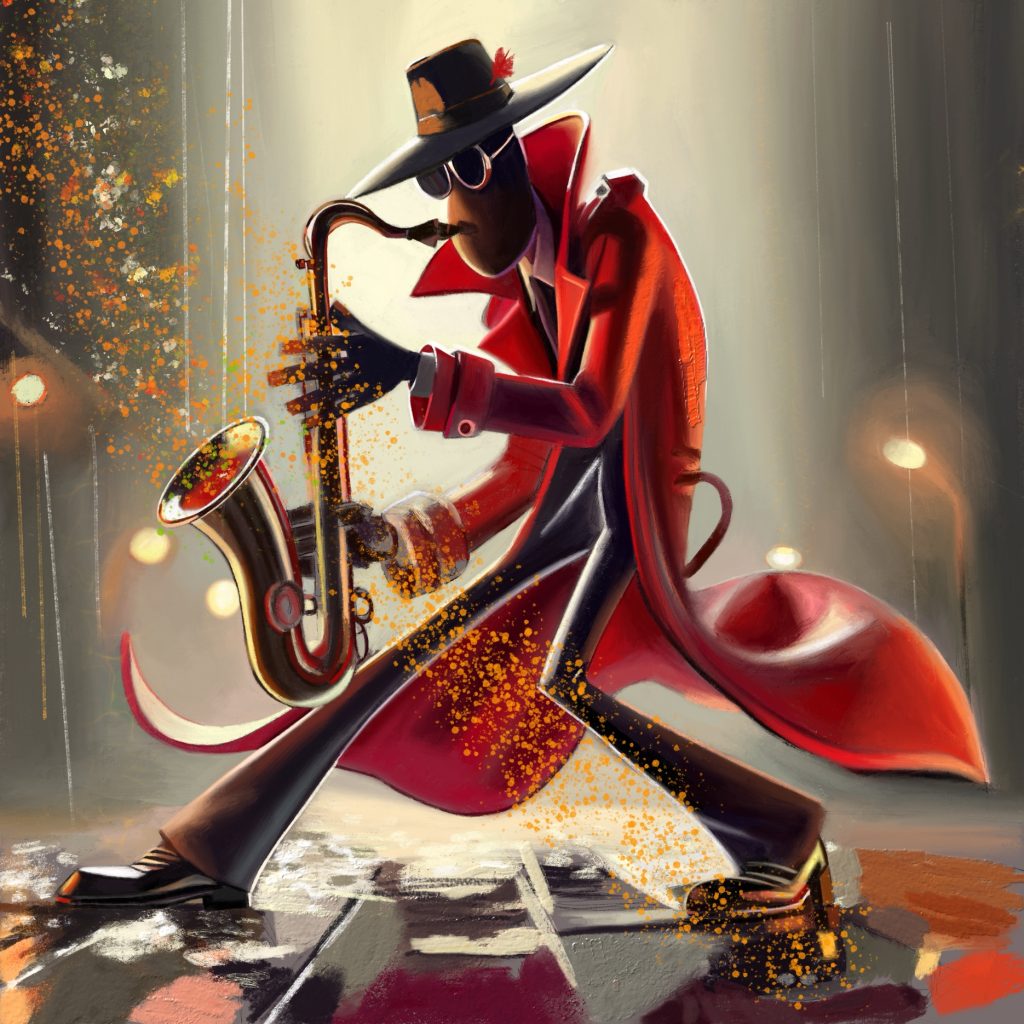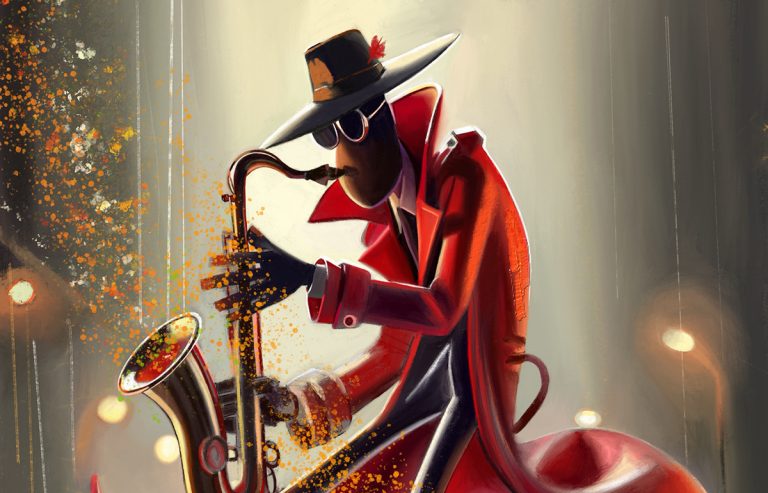Oronde Kairi’s work moves. It dances, it plays, it fights, it remembers. Based in the Germantown neighborhood of Philadelphia, Kairi draws energy from the city around him—its sounds, its grit, its memory. His paintings are full of rhythm, and so is his process. Music, sports, street life, and stories come alive in his work, told through bold lines and expressive color. He doesn’t just paint people; he paints motion, emotion, and experience. Raised in Philly during the 1980s, he saw the city’s walls as canvases—graffiti sprayed in defiance, in pride, in voice. That influence never left him. You can feel it in the urgency of his brush, in the compressed power of his compositions. Oronde’s paintings are rooted in the everyday, but they open portals into deeper worlds—ones shaped by jazz, poetry, family, and community. They aren’t just images. They’re lives, caught mid-beat.

Midnight Melody, one of Oronde Kairi’s recent pieces, captures the quiet chaos of a moment frozen in jazz. You can almost hear it. The painting shows a lone saxophonist under a flickering streetlamp, dressed in a sharp red coat and wide-brimmed hat, eyes hidden behind round sunglasses. Rain glints off the cobbled street. Orange embers of sound scatter from the saxophone like sparks. You don’t just see the music—you feel it moving past you, twisting in the wind, refusing to fade.
The piece is set at midnight, but the hour isn’t just a time of day—it’s a state of mind. Everything is still, but full. Still air, full heart. Kairi knows how to hold that tension. The background is minimal, almost abstract. Just enough to suggest a street, a city, a night. The real focus is the movement—the curve of the musician’s body, the lean of the saxophone, the spray of glowing notes. Even the shadow the saxophonist casts feels alive.
What makes this painting hit so hard is that it feels familiar. It’s not just a musician—it’s memory. It’s every late-night walk past a bar with live music leaking into the street. It’s the friend who could always make a song out of silence. It’s the feeling of being up when the rest of the world is asleep, and something catches you—melancholy, inspiration, maybe both.
There’s a quiet celebration here, but it’s wrapped in a kind of loneliness too. That’s part of the magic. Kairi doesn’t shy away from mood. He leans into it. The painting doesn’t explain everything. It doesn’t need to. It trusts the viewer to bring their own soundtrack. The jazz is just the thread that ties us together.
“Midnight Melody” also shows Kairi’s skill with color and light. The warm orange and red tones are balanced by the cool grays of the wet street and misty air. The glow of the streetlamps is soft but insistent. It pulls you in. The palette isn’t loud, but it lingers. That’s something Oronde’s art does well—it doesn’t just impress, it sticks with you.
You can also see the ghost of graffiti in the work. Not in literal tags or spray paint textures, but in the spirit of it. The movement. The layering. The way things bleed into each other. The saxophonist looks like he could have stepped out of a mural on the side of a city building, pulled into focus just for this moment.
This piece is jazz. Not just as a subject, but as a form. It’s improvisational and structured at the same time. It has flow. And like good jazz, it’s not trying to be perfect. It’s trying to be real. There’s tension and grace and something a little haunting.
“Midnight Melody” is more than a painting. It’s a reminder. A reminder that music, like memory, doesn’t disappear. It echoes. It shifts shape. It haunts. And sometimes, if you’re quiet enough, it returns.
Oronde Kairi makes art that remembers. Art that moves with purpose. Art that tells stories without needing to shout. And in this piece, as with much of his work, he offers a moment of stillness inside the noise. A place where something sacred—music, history, soul—catches its breath and plays one more note.


